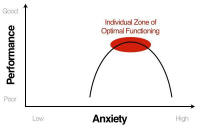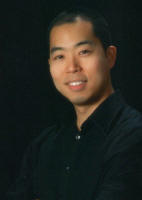Special Reports
Turning Performance Anxiety into Your Personal Best
 Pounding heart. Cold, clammy hands. Hyperventilation.
Pounding heart. Cold, clammy hands. Hyperventilation.
Your thoughts are a swirling tornado or, worse, your mind goes blank altogether and you’re sure you’re about to be exposed as an incompetent fraud.
Sound familiar? If so, then you’re not alone. But there are ways to deal with performance anxiety and even use it to your advantage. We’ll explore some techniques to turn those private attacks into public applause.
A common problem
Performance anxiety strikes fear in the hearts of the most seasoned performers. Lily Pons, legendary coloratura soprano of the Golden Age, used to get sick before every performance. Paul McCartney nearly quit the Beatles in the early days because of it. Examples abound of experienced performers (some real surprises here) who have admitted to performance anxiety: Barbara Streisand, Sir Laurence Olivier, Lucille Ball—even Winston Churchill and Abraham Lincoln.
In the performing arts, it’s not just soloists who are susceptible to this most insidious of conditions. According to a survey by the International Federation of Musicians, as many as 70 percent of orchestra players experience enough performance anxiety to affect their playing. For some, the feelings of doubt, fear, and dread can lead to substandard playing and humiliating moments. For others, pre-showtime jitters yield peak performances.
“The very moment you go on stage you MUST be scared. If you are not scared, then you are not an artist,” Luciano Pavarotti declares in a video which also contains frank discussions with artists about their performance anxiety.
How do we make sense of this? How can we transform ourselves from the performer who chokes under pressure to the one who soars? Like the joke about Carnegie Hall, the answer is practice, practice, practice—of a different sort than you may be used to.
Just as double-tonguing or down-bow staccato require a very specialized set of technical skills, so does managing anxiety to work for, rather than against, you. Here are a few strategies.
Strategy #1: Centering
Many athletes rely on a specific pre-performance routine to help them get into a more focused state before leaping into action. The following seven-step routine, called “centering,” has been used by many musicians who have won auditions and competitions and generally achieve their personal best under pressure.
(1) Focus
Minimize external distractions by identifying a place to rest your eyes. Ever notice how tennis players often keep their eyes glued to the strings on their racquets between points? Same idea.
(2) Imagine a positive outcome
Under pressure, we tend to think about what we don’t want to happen, rather than what we do want. Cue up an image of exactly how you want to sound and state your intention in clear, affirmative terms (e.g., “I am going to nail the opening,” instead of “Don’t miss the high note”).
(3) Breathe
Diaphragmatic breathing is one of the keys to controlling the body’s fight-or-flight response. Breathe in through your nose and fill up your lungs fully by allowing your belly to expand outwards, then breathe out slowly through your mouth, directing all of your attention to what your breathing sounds and feels like.
Focusing on internal sensory processing will help to slow down and quiet your thoughts, facilitating a mental state that is more concentrated and conducive to playing well.
(4) Balance
Taken from the martial arts concept of ki or chi, achieving a grounded, entered, and balanced state can help calm our nerves and give us a strong base from which to project.
(5) Release muscle tension
In much the same way that we keep a lot of unnecessary tension in our neck and shoulders when typing, we generally play with more muscular effort and tension than is necessary—even in nonperformance settings. Learn to let go of this excess tension in the practice room; it will enhance your ability to play with ease and freedom on-stage as well.
(6) Avoid paralysis by analysis
We tend to hyper-focus on technique and mechanics under pressure, resulting in a phenomenon called “paralysis by analysis.” It’s more effective to focus on the big picture, meaning the sound, a kinesthetic sensation, or even an image of the end result we want. This is a technique that artists like Arnold Jacobs and Leon Fleisher often discuss in master classes.
(7) Assert yourself
Under pressure, it is tempting to play tentatively. However, this only increases the likelihood of errors. Commit to playing confidently, even if you don’t feel confident. Channel all of your nervous energy into a stream of focused sound.
Centering takes time to master. However, if you devote five to 10 minutes every day to practice these seven steps, you will soon be able to get a handle on your nerves and nail those big, scary, exposed entrances with confidence.
Strategy #2: Expanding the Optimal Zone
 We all have an anxiety “comfort zone,” where we naturally achieve our personal best. We can’t always rely on finding it, however, so it’s critical to expand that zone of optimal functioning. As mind-fulness expert Dr. Jon Kabat- Zinn says, “You can’t stop the waves, but you can learn to surf.”
We all have an anxiety “comfort zone,” where we naturally achieve our personal best. We can’t always rely on finding it, however, so it’s critical to expand that zone of optimal functioning. As mind-fulness expert Dr. Jon Kabat- Zinn says, “You can’t stop the waves, but you can learn to surf.”
You can “surf” by using a strategy called simulation training, where you practice playing in conditions similar to those under which you have to perform. [Note: Please consult with a physician before doing this exercise if you are pregnant or being treated for an ongoing health condition.]
(1) Record your performance
Give yourself permission to focus all of your attention on the music and playing freely, instead of listening for flaws, thinking about technique, and dwelling on the physical discomfort and distractions you are about to experience (you’ll see what I mean in a moment). You can hear all that in the playback(s).
(2) Get your heart rate up
Go for a quick run around the block or walk up and down the stairs a few times. You want to increase your pulse and respiration to simulate the symptoms of anxiety.
(3) Center, using the pre-performance routine outlined in Strategy No. 1.
(4) Go for it
Since first impressions are key, test your ability to rise to the occasion by performing just the first 60 seconds of an excerpt to the absolute best of your ability—no holding back or careful, tentative playing allowed.
(5) Rate and review
Listen to your recording: On a scale of one to 10, how successfully did you realize your clear intention? Write down any observations or thoughts you might have had during the experience.
(6) Repeat steps two through five immediately, with the same excerpt of music. Do five to seven total repetitions at each sitting, once or twice a day.
It may take a few days to become more adept at channeling the extra energy instead of fighting it, but as you listen back to the recordings, you’ll notice the extra zing, aliveness, and sense of freedom in your playing. If so, then congratulations: You’ve learned to ride the wave.
Additional Resources
Today’s musicians may be under more stress than ever before; thankfully, there are also more tools at our disposal than ever before. The following offer additional techniques and advice for performing at your best when it matters most.
Lecture by Mihaly Csikszentmihalyi on achieving a state of “flow.”
Performance Success (by Dr. Don Greene), an applied sport psychology book written specifically for performing artists
10-Minute Toughness (by Dr. Jason Selk), another helpful collection of sport psychology exercises, though written more with the athlete and business professional in mind
And in the department of You Are Not Alone…
Soundcheck discussion, Coping with Performance Anxiety, with Dr. Noa Kageyama and Blair Tindall
Rolling Stone interview with pop artist Adele about her stage fright

Dr. Noa Kageyama is a performance psychologist currently on the faculty of The Juilliard School and The New World Symphony. A former violinist himself, he maintains a performance psychology blog for musicians, BulletProofMusician.com.

WHO'S BLOGGING

Law and Disorder by GG Arts Law
Career Advice by Legendary Manager Edna Landau
An American in Paris by Frank Cadenhead





 FEATURED JOBS
FEATURED JOBS

 RENT A PHOTO
RENT A PHOTO


